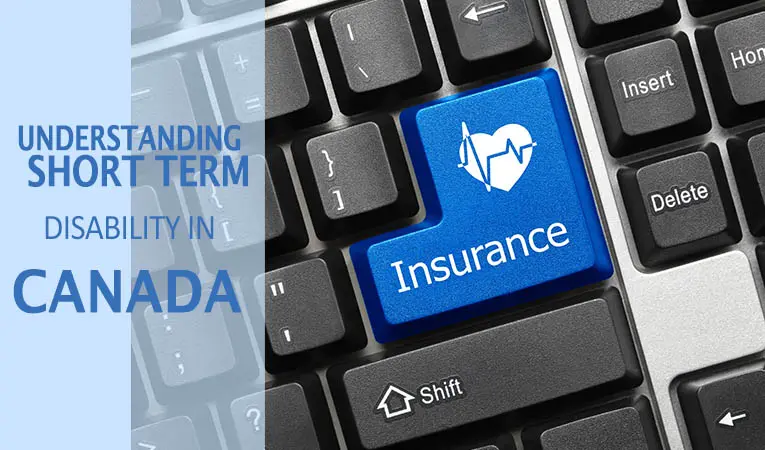If you were recently diagnosed with an illness or injury that could impact your ability to do your job or continue working, long-term disability coverage is an immediate concern. Understanding the application process is critical for everyone since illness and injury can happen to anyone. Seeking coverage while you’re healthy and working will improve your approval chances. Here is a brief overview of long-term disability in Canada and the application process to help answer your questions.
Table of Contents
Long-Term Versus Short-Term Disability
What is the difference between long-term and short-term disability? The names imply a difference in length, but where is the line drawn? Are there other differences besides how long they cover?
Short-term disability lasts for a maximum of 6 months. While some cases where the period of disability is uncertain at the time of diagnosis may start under short-term disability, they can later be transferred to long-term coverage. A prognosis of disability for longer than 6 months is considered long-term disability from the start.
Short-term disability starts almost immediately upon approval, and the requirements are often less stringent than those needed to qualify for long-term disability. To be considered disabled over the short term, most policies only require you to be unable to perform your usual job to qualify. While terms vary between policies, most long-term disability policies require applicants to be “totally disabled” or unable to perform any job to be approved.
What Qualifies Individuals for Disability Benefits
Various chronic illnesses, mental illnesses, injuries, and conditions may qualify for coverage under long-term disability in Canada.
The most common conditions impact an individual’s ability to perform physical tasks. Other disabilities include conditions with symptoms including chronic pain and fatigue, brain fog or cognitive impairments, and autoimmune problems. Finally, long-term disability in Canada also covers several mental illnesses.
What Does “Totally Disabled” Mean?
Many benefits plans require you to be declared “totally disabled” to qualify for long-term disability benefits. The Canada Pension Plan (CPP) disability benefit requires total disability following the “own occupation” period to continue receiving disability benefits. What does this mean?
“Total disability” is a state of being unable to perform any occupation.
Included in this is your ability and willingness to participate in occupational rehabilitation programs designed to help those on long-term disability return to work in some fashion, either through physical therapy rehabilitating an injury, assistive devices or technology, or training for another profession.
How Do Accommodations Affect the Process?
In some cases, accommodations can improve an individual’s ability to perform their occupation despite illness or injury. This may be as simple as allowing part-time hours or involve other changes to when or how you perform your duties.
Your doctor should complete and submit recommendations for all possible reasonable accommodations for your disability. Your employer and physician, and insurer will work with you to determine whether accommodations can allow you to continue working in some fashion and how this will impact your employment and long-term disability coverage.
What to Expect During the Application Process
As you may expect, applying for long-term disability is a lengthy and complex process. You need to have a clear understanding of the process and your responsibilities before filing a claim.
Don’t Wait Until You Are Disabled to Think About Long-Term Disability Benefits
While there is a Canada Pension Plan (CPP) disability benefit, the national plan is far from the only long-term disability plan available. There are several different disability benefits available through various insurance companies. If you are healthy and working, now is the perfect time to research and consider your options. No matter the plan you choose, it’s vital to work and pay into any disability plan to qualify for benefits should the need arise.
Understanding the Elimination Period
Every plan includes an “elimination period” before an individual becomes eligible for long-term disability coverage. It is a period where disabled individuals should use any sick leave, short-term disability insurance, or the standard employment insurance (EI) sickness benefits. The length of the elimination period varies between plans, but most require the insured to be completely unable to work for a minimum of four months before applying.
What Do You Need to Apply?
The documented medical evidence of your disability and its impact on your ability to work is crucial to your application. You must obtain the completed disability medical report forms from your physician to file with your claim.
Make sure you do not cut ties with your employer. If you accept early retirement or a severance package before applying for disability, there is a strong chance the insurance company will deny your claim.
The exact forms needed vary from one insurance company to another. Check with your provider to make sure you have and complete the correct forms for your plan.
How Long Do Long-Term Disability Insurance Benefits Last?
Each plan is different, but there are a few commonalities between reasons for coverage termination. Recovery, reaching retirement age for your occupation, and death are common reasons. However, plans may also be terminated if you resign, retire early, or refuse to participate in a return-to-work plan.
Understanding Short Term Disability In Canada
Short & Long Term Disability insurance is a common feature of a group benefits plan. It eases the financial burdens associated with disabilities or illnesses.
Get Help Finding the Best Long-Term Disability Coverage for You
Save time and energy while searching for the best long-term disability plans. Get a quote from Group Enroll, and we’ll sift through the different plans available to find the ones that fit your needs. We’ll even help you compare them and get signed up.








